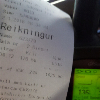PAfordman
New Member
- Joined
- April 12, 2013
- Messages
- 1
- Reaction score
- 0
- City, State
- PA
- Year, Model & Trim Level
- 1992 ford edxplorer sport
Hi Everyone
I am new to this board and I hope that someone can help. I have a 92 explorer and I am in the process of replacing the in tank pump. The fuel lines that connect to the tank are all bad as they are rotted. I need all 3 lines. These lines are braided on each end and have a solid center section. They are appx 3 ft long, and have the duckbill connector on each end. Ford no longer sells this part claiming its obsolete. I scoured the junk yards here in PA and NO one has those lines. They tell me that when they "process" junk cars, they remove the tank and the lines together. So, I have a new pump with no lines and my car is on jackstands totally disabled. I am at a total loss as to what to do next. I will gladly purchase these lines used from anyone here that has them. Why does ford do these things? Thanks in advance
Benj
I am new to this board and I hope that someone can help. I have a 92 explorer and I am in the process of replacing the in tank pump. The fuel lines that connect to the tank are all bad as they are rotted. I need all 3 lines. These lines are braided on each end and have a solid center section. They are appx 3 ft long, and have the duckbill connector on each end. Ford no longer sells this part claiming its obsolete. I scoured the junk yards here in PA and NO one has those lines. They tell me that when they "process" junk cars, they remove the tank and the lines together. So, I have a new pump with no lines and my car is on jackstands totally disabled. I am at a total loss as to what to do next. I will gladly purchase these lines used from anyone here that has them. Why does ford do these things? Thanks in advance
Benj










